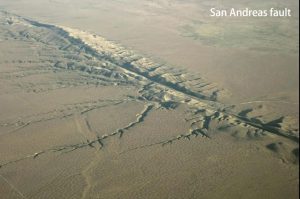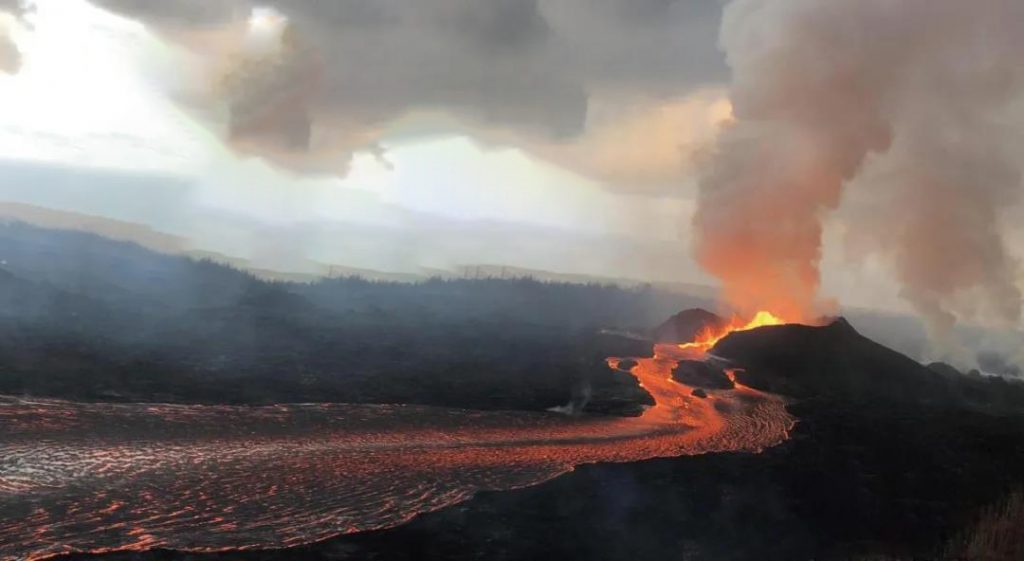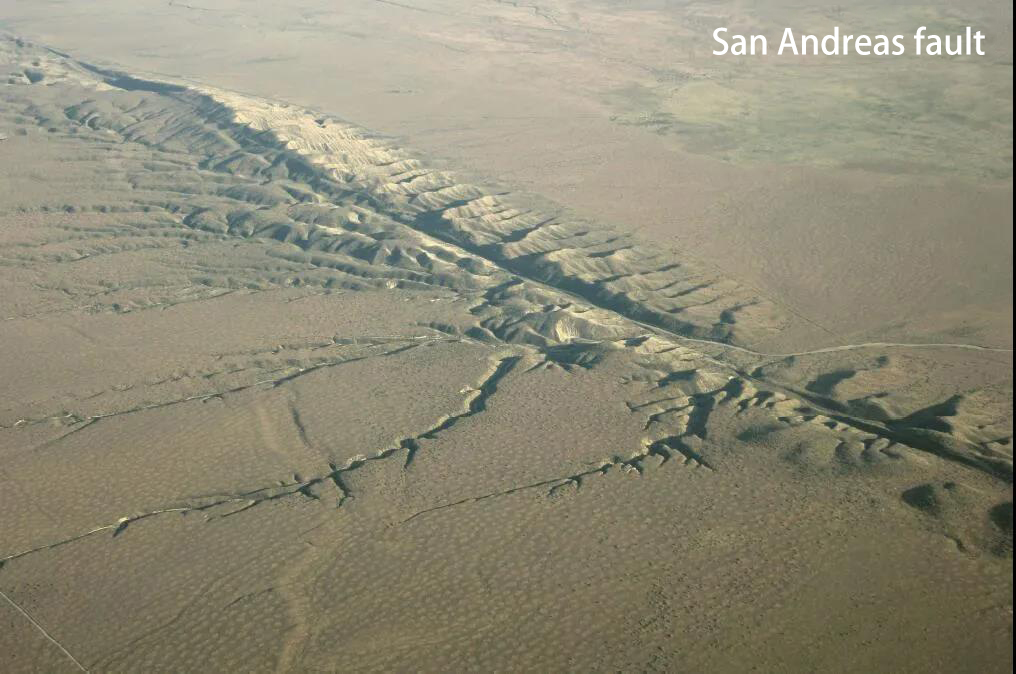
The water cycle on the earth transports water to various places, and rainfall and snow are important links. But rain and snow are sometimes destructive, such as causing floods and blizzards.
However, the complexity of the natural system may be unexpected: in addition to the natural disasters that we can see from rain and snow, they sometimes also perform secret operations and create unexpected natural disasters. What is going on?

Rain ignited the volcano?
In May 2018, Kilauea Volcano in Hawaii, USA, erupted violently. A large amount of volcanic ash was ejected into the sky. New cracks appeared on the surface near the volcano, and lava gushed from the cracks.
The lava rushed into the sea and caused damage to the sea near the coast. The lava also rushed to residential areas and destroyed hundreds of houses…
The eruption of Kilauea volcano is not big news, because it was originally one of the most active volcanoes on earth, with two long-standing lava lakes at the bottom of this volcano.
Since 1983, it has hardly stopped erupting, but in 2018, it suddenly went against the normal state of “moderate” eruptions and became unusually active.
Although most people think that the Kilauea volcano eruption is nothing special, researchers at the University of Miami in the United States have a question in their minds: What caused the violent eruption of Kilauea volcano?
Since the inside of the volcano cannot be observed, direct information cannot be obtained. Researchers can only take a different approach. They analyzed scientific records of weather and rainfall near Kilauea volcano, as well as long-term monitoring data of Kilauea volcano. To explore the causes of volcanic eruptions, why study the weather and rainfall?
Although this unusual operation is confusing, they really found some clues. The researchers added the weather, rainfall, and volcano-related data of Kilauea volcano for more than two hundred years into the model.
As a result, they found that since 1790, approximately 60% of Kilauea volcano eruptions have been in the rainy season. The monitoring data showed that the pressure inside the volcano also increased during these periods.
And when they input the relevant data of Kilauea volcano in 2018 into the research model, they found that Hawaii had unusually heavy rainfall a few months before the eruption, and the internal pressure of the volcano reached the highest level in 50 years before and during the eruption. , Which eventually led to the eruption of the volcano.
Researchers believe that this may be a large amount of rain seeping into the crevices of deep rocks, increasing the internal pressure of the volcano, forcing magma to gush to the crater, or “opening up” a new “pipe”, resulting in a violent eruption.
So, can heavy rainfall really detonate a volcano?
This novel point of view has not been recognized by most scientists. Because the main reason for the eruption of a volcano is the pressure inside the volcano. Although rainfall has a certain degree of influence on the volcano, the pressure it creates is not enough to trigger a major eruption. There should be another reason for the increase in internal pressure of the volcano.

A team of researchers studied the volcanic material ejected from Kilauea volcano in 2018, and they found that the first material ejected from the volcano had stayed in the volcano for a long time.
While Kilauea volcano has been active, why haven’t these substances been ejected in time? Researchers believe that these substances may be the “culprits” that cause excessive pressure inside the volcano.
They may block the internal system of the volcano and cause pressure to accumulate. When the pressure reaches a critical point, the volcano erupts violently, and first The material that rushes out of the crater includes “blockages.” Therefore, the cause of the Kilauea volcano’s eruption may be an internal blockage.
It seems that rainfall may not be the main reason for volcanic eruptions, but this view also provides new clues for the study of predicting volcanoes. Nowadays, scientists cannot accurately predict the time and intensity of volcanic eruptions.
One of the most important reasons is that we do not know enough about the causes of volcanic eruptions. If we can integrate all the possible causes of volcanic eruptions, it may be helpful to accurately predict volcanoes break out.
Rain and snow pressed the earthquake button?
The San Andreas fault in the United States is located at the junction of the Pacific plate and the North American plate. It is like a long scar on the surface, stretching for about 1,000 kilometers. Due to the interaction of plates, earthquakes often occur near faults. The causes of earthquakes are varied, such as the impact of ocean tides.
As early as 2002, scientists discovered that tides caused the shaking of underwater volcanoes, and in 2004, scientists discovered that tides caused earthquakes on some faults.
As seismographs become more sensitive and distributed more and more widely, scientists can identify micro-earthquakes with lower magnitudes and focal sources located deeper in the earth’s crust. In 2012, scientists discovered that the San Andreas Fault is also affected by tides. Microseisms occur more frequently at the peak of the tides twice a day.
During the two high tides every month, the micro-earthquakes in this fault zone are more concentrated. Scientists believe that this is because the sea water swayed back and forth under the action of the tide.
At the peak of the tide, the impact of the sea water on the Pacific plate bent it towards the North American plate, and the interaction of the two plates triggered micro-earthquakes.
In 2017, seismologists at the University of California, Berkeley also discovered that winter rain and snow can also cause an increase in micro-earthquakes near faults. How does rain and snow cause an earthquake?
This may be due to “seasonal load”. The so-called seasonal load is simply the pressure of the rainy season and winter snow on the crust.
Seismologists collected data from more than 600 GPS sensors distributed in California and measured the vertical movement of the San Andreas fault line to track changes caused by seasonal loads.
These sensors are very sensitive and can detect slight sinking and rising of the ground. Based on the data, they calculated the changes in pressure at different locations on the fault in different seasons, and compared the 3,600 earthquakes with magnitude 5.0 or less between 2006 and 2015.
In the end, they concluded a rule-from winter to spring, the crust near the San Andreas fault will sink under heavy pressure due to the accumulation of snow, lakes and water in the reservoir. In early spring, The earth’s crust sinks the most; with the arrival of summer, when the snow melts and the water level drops to a minimum, the ground will rebound and return to its original state.
Just between this sinking and rising, a small earthquake appeared. It seems that the rain and snow in winter are indeed related to micro-earthquakes.
So, can the results of this study be used to predict earthquakes? I’m afraid not, but it allows us to understand the destruction process of small earthquakes and earthquakes to the crust, and the accumulation of this knowledge and data may help us make more accurate assessments of the risk of earthquakes near faults. More importantly, as the global climate changes, some areas have more rain and snow in winter and drier in summer.
If these areas happen to be earthquake-prone areas, these changes may affect the occurrence of earthquakes. Then understand the relationship between rain and snow. The relationship between earthquakes is very important.
Nowadays, despite the great development of science and technology, earthquakes and volcanic eruptions cannot be accurately predicted. However, these natural beasts can cause serious damage when they do evil.
Therefore, scientists have never stopped studying them and continuously excavated to cause these The various causes of natural disasters, the study of the process of these disasters, and these new discoveries and research will help humans predict these natural disasters in the future.
Comments